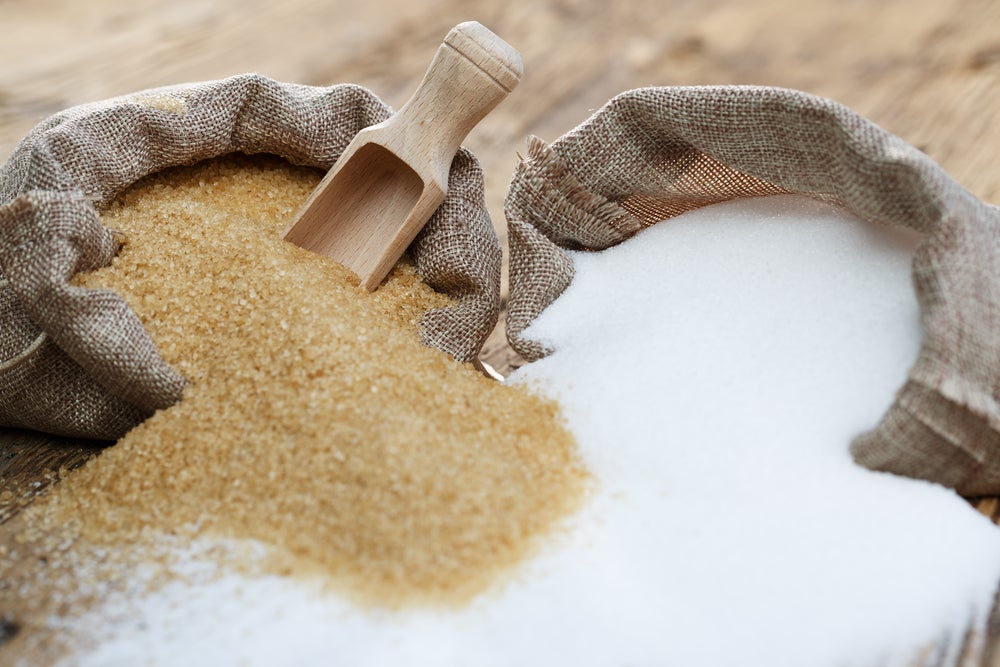Does Sugar Deserve Such A Bad Reputation?

Photo: Shutterstock.com
Should we really be so sour on sweets? In a word, no. But let me explain. There are two categories of sugars. Natural sugars occur in foods we consume, and include fructose (found in fruits) and lactose (in milk and dairy products). Added sugars, on the other hand, are included after the fact by the manufacturer. These include cane juice, sucrose and high-fructose corn syrup (an inexpensive sweetener made from cornstarch), which is included in packaged crackers and condiments. It could also mean sugars we add ourselves—like that dollop of honey in your oatmeal or the sugar in your tea. It’s added—not natural sugar—that’s cause for concern.
So what’s the di fference between sugars from di fferent sources? Sugar, in all forms, is a simple carbohydrate that our bodies can use for energy. Any sugar we eat—fruit, honey, candy or sports drink—will be rapidly available for use by working muscles if consumed just prior to or during exercise—and in appropriate amounts. Whether the sugar was from honey or candy, once it enters the small intestine, it gets broken down into the simplest form of absorbable sugar—glucose. Refi ned/ processed sugars contain a higher concentration of fructose, which is rapidly processed in the liver to triglycerides, leading to an increased triglyceride level and decreased HDL (“good” cholesterol). On the contrary, foods high in natural sugar generally contain fi ber—which slows digestion and absorption—and provides vitamins and minerals. Note: Honey is the rare exception that contains natural sugar but does not contain fiber.
What are the sugary land mines to avoid? The major sources of added sugars in the American diet include sodas, fruit juice, candy and desserts. Studies show that U.S. adults consume an average of twice the recommended amount of added sugar.
How much sugar is okay? The American Heart Association recommends limiting added sugar to no more than nine teaspoons (36 grams, 150 calories) for men and six teaspoons (25 grams, 100 calories) for women. Outside of your training, aim to get most of your sugar intake from natural sources—fruits, grains, milk and starchy vegetables. Added sugars should be viewed as sports fuel— taken right before or during workouts—or treats, eaten in moderation. Final note: We should not strive for a 100 percent sugar- free diet. Doing so is unnecessary and can lead to cravings, feelings of deprivation and lack of overall energy and ability to train.
Try This Recipe

Pumpkin-Pecan Bread Pudding
Recipe and Photo by Justin McChesney-Wachs
This is the time of year to sneak pumpkin into just about anything. Like a cross between french toast and pumpkin pie, this bread pudding can be made ahead and served warm or cold for breakfast or dessert. It’ll fuel you up before a morning run or is perfect for a post-race brunch with your run buds. Serves about 6.
Ingredients:
- 12 ounces egg bread (such as brioche)
- 3 eggs
- 2 cups milk
- 1 cup heavy cream
- ½ cup maple syrup, plus more for serving
- ½ teaspoon vanilla extract
- 1 teaspoon pumpkin pie spice
- ½ teaspoon ground cinnamon
- 1 cup canned pumpkin purée
- ¼ cup pecans, coarsely chopped
Directions:
Preheat oven to 215 degrees. Cut bread into 1-inch cubes and place on a parchment-lined baking sheet. Dry bread cubes in oven 15–20 minutes, or until slightly dried. Let cool.
In a large bowl, whisk eggs, milk, cream, maple syrup, vanilla extract, pumpkin pie spice, cinnamon, and pumpkin purée. Gently stir in cubed bread. Pour mixture into an 8-by-8-inch buttered baking dish and top with pecans. Cover with plastic wrap and let sit for 30 minutes.
Meanwhile, preheat oven to 350 degrees. Bake uncovered 45–60 minutes. The bread pudding will puff up and should spring back when lightly pushed. Let cool slightly and serve with a drizzle of maple syrup.